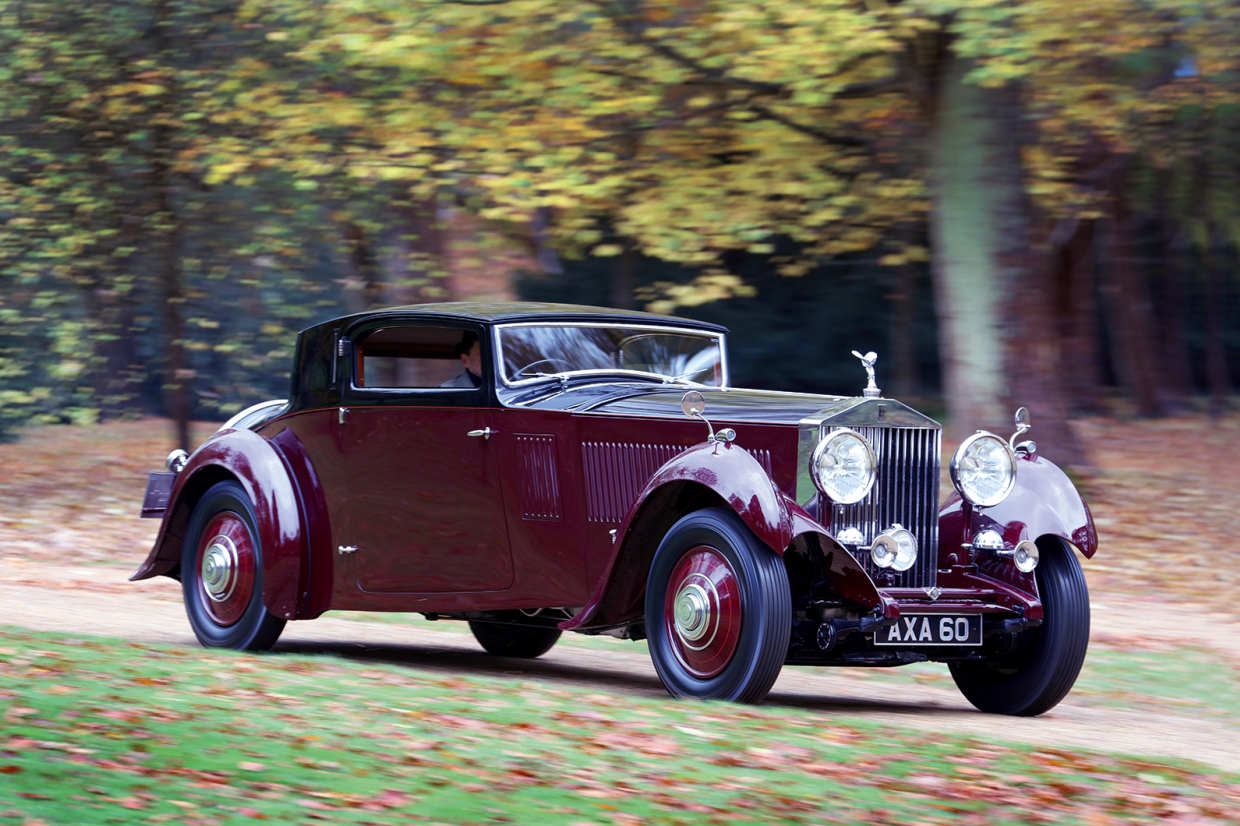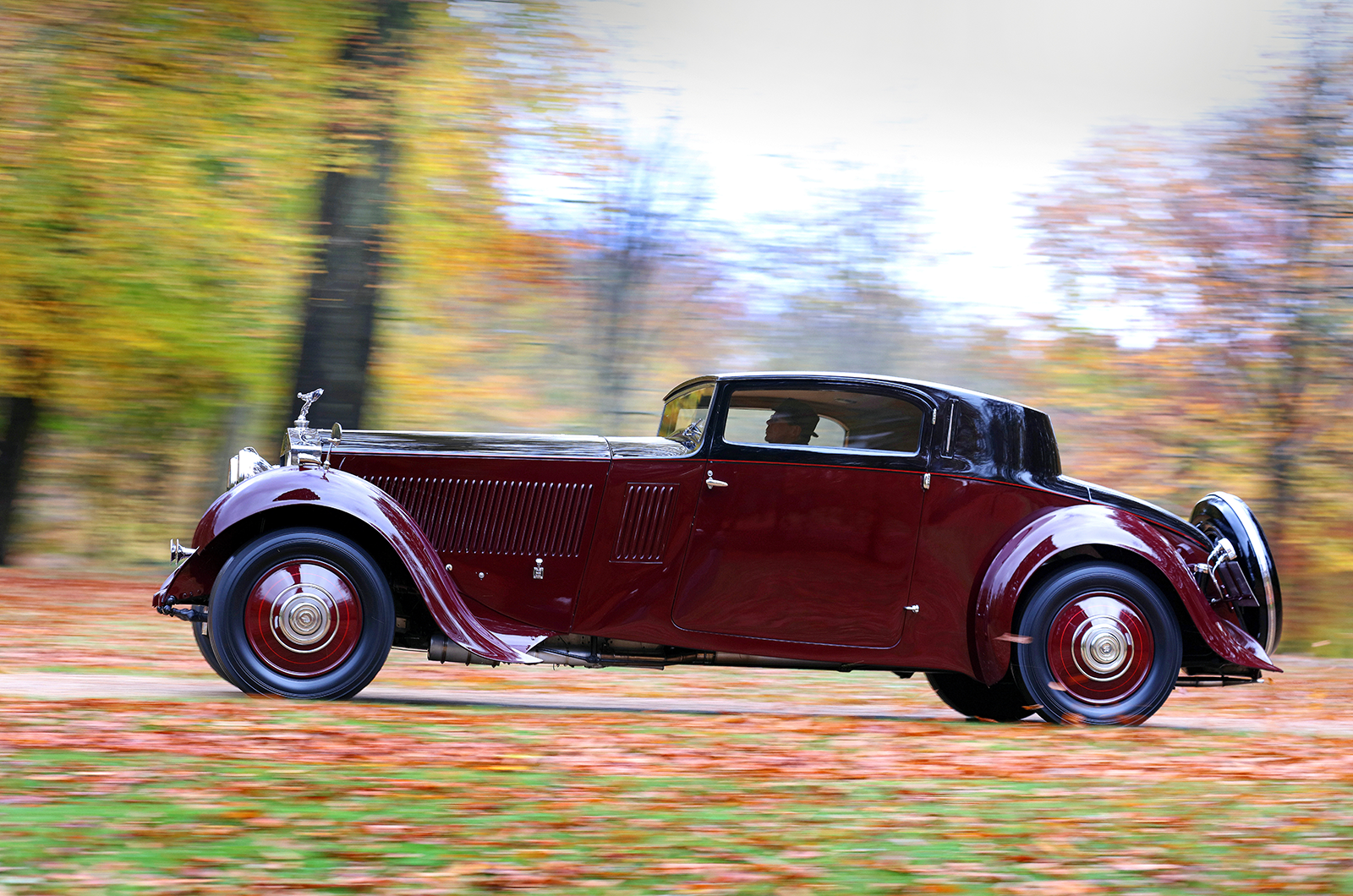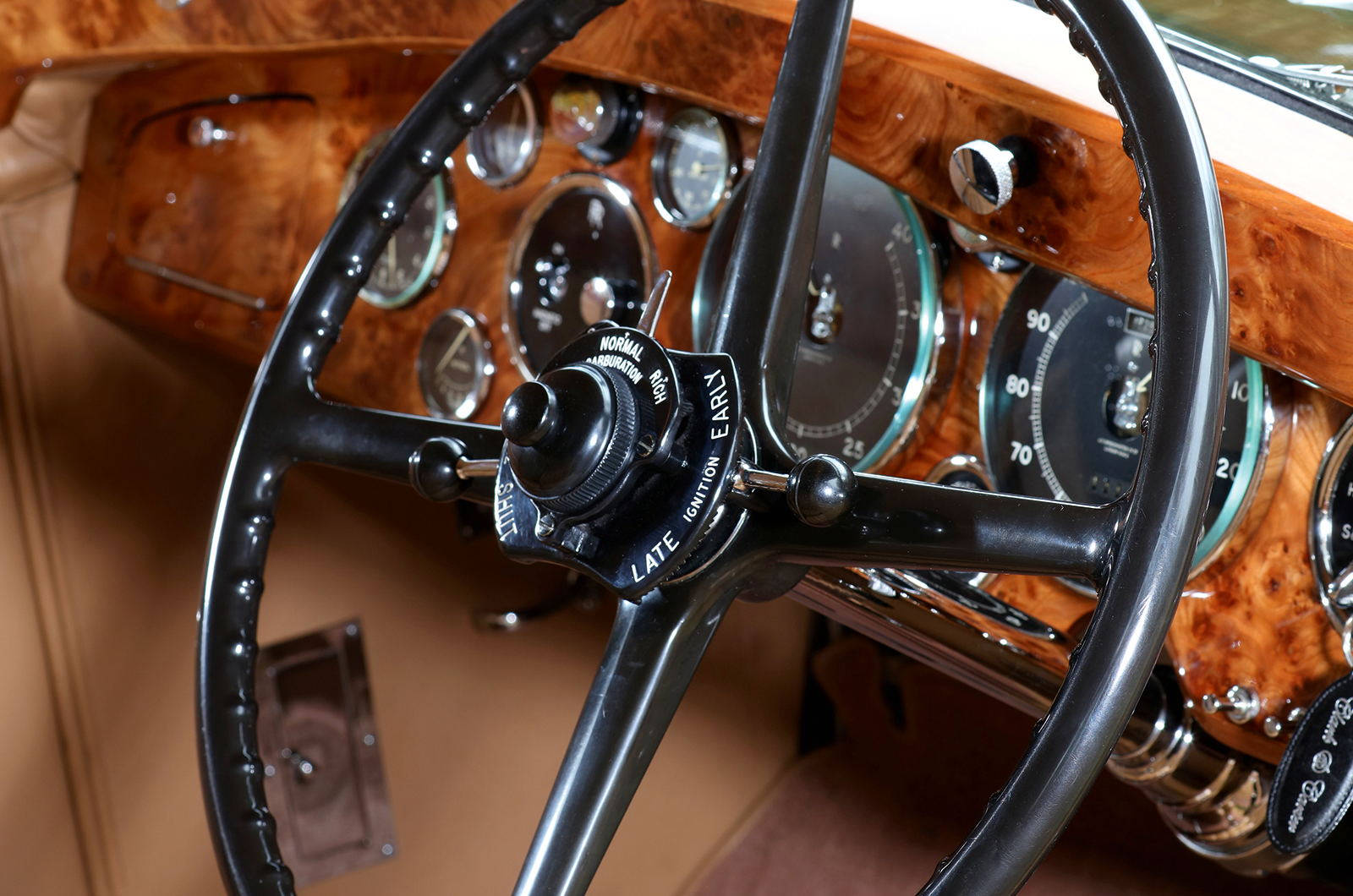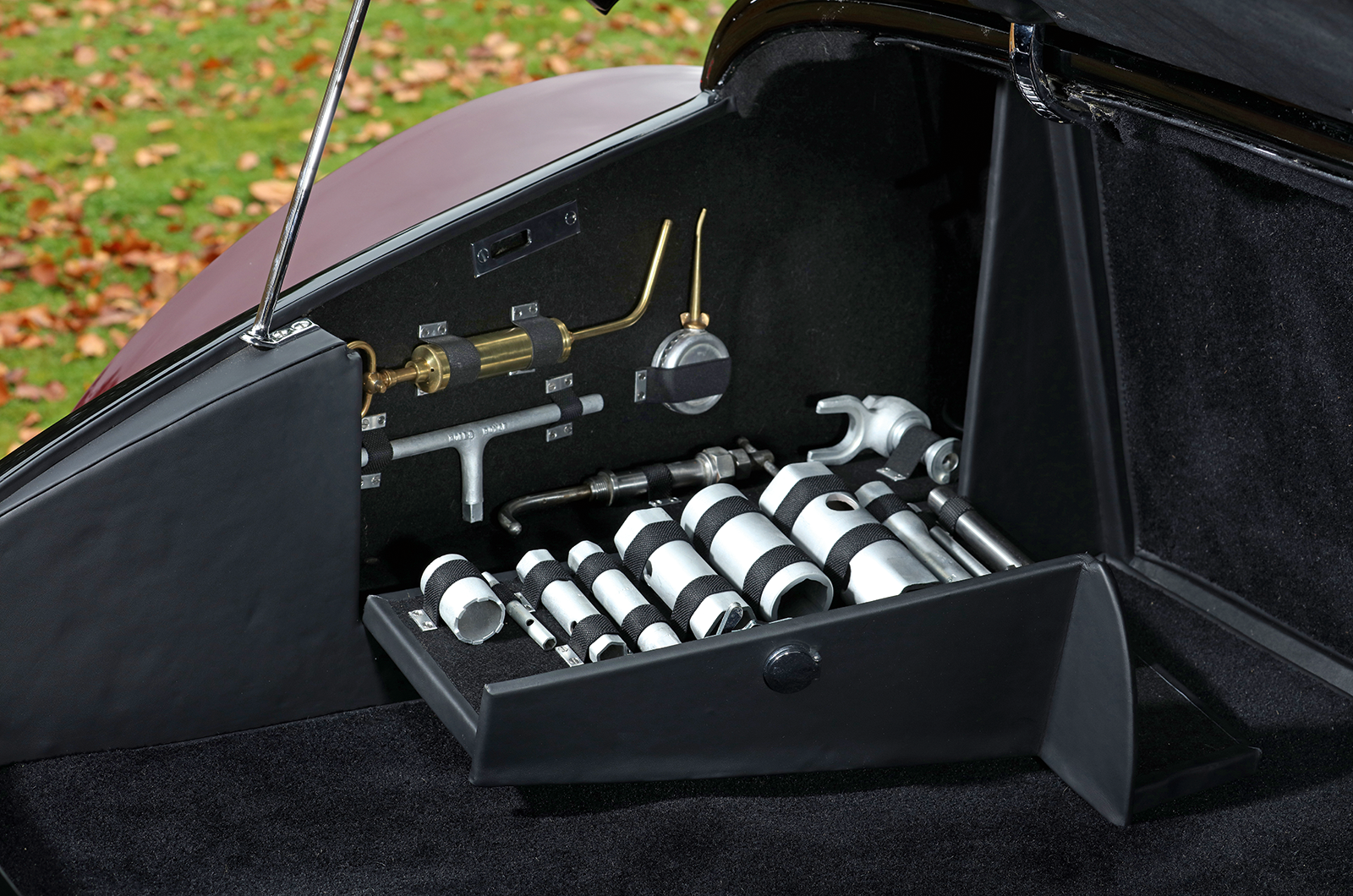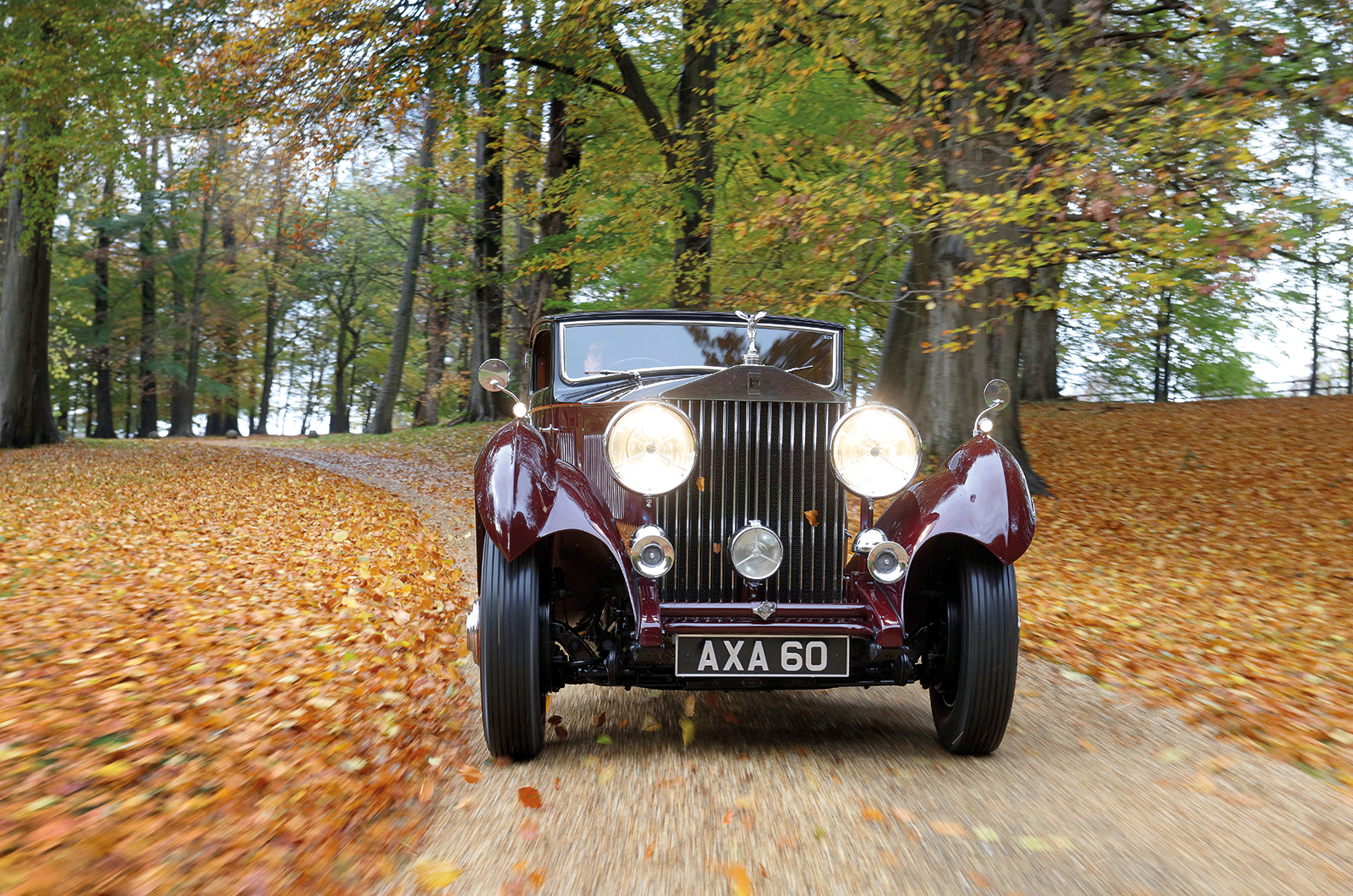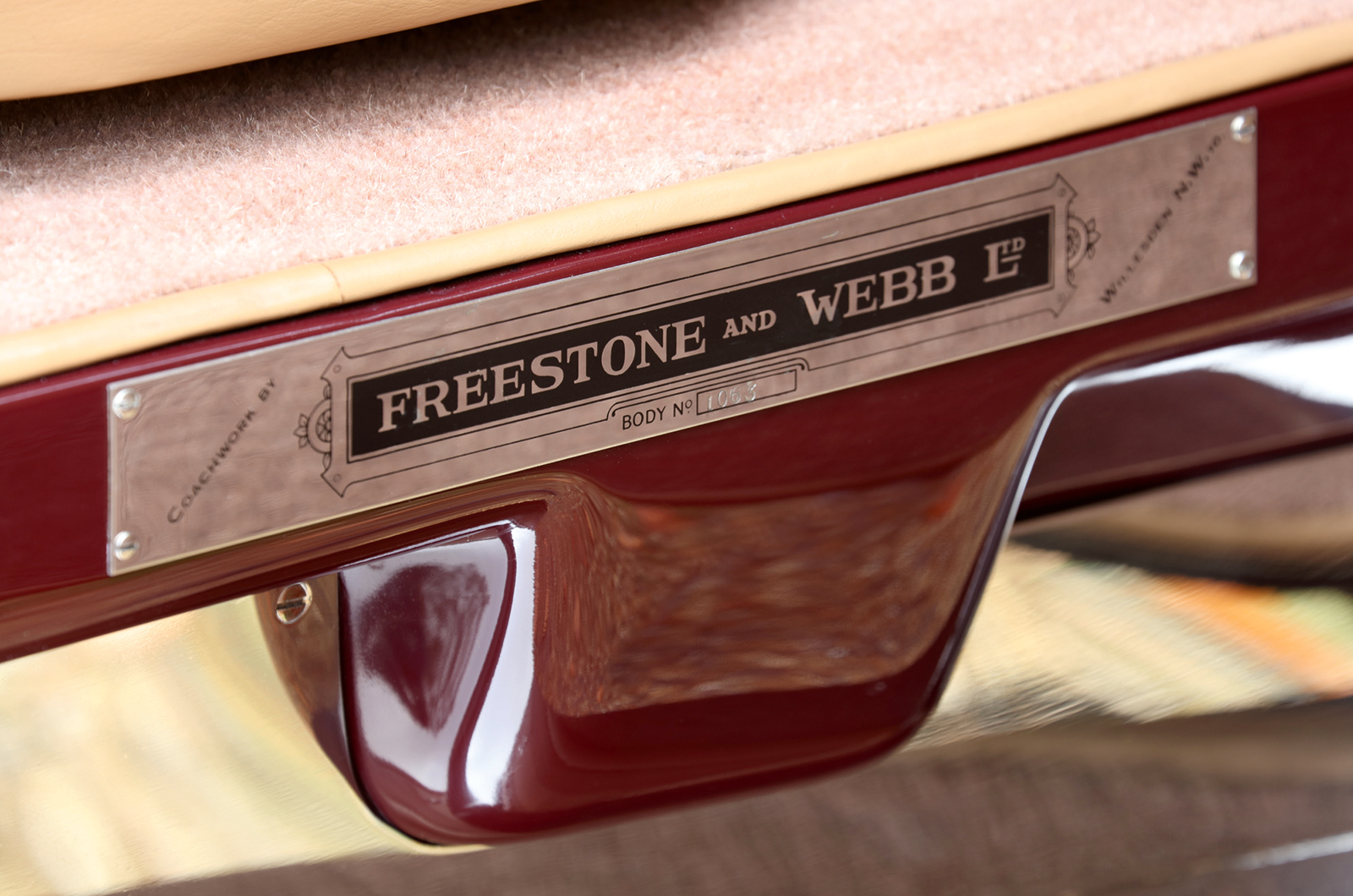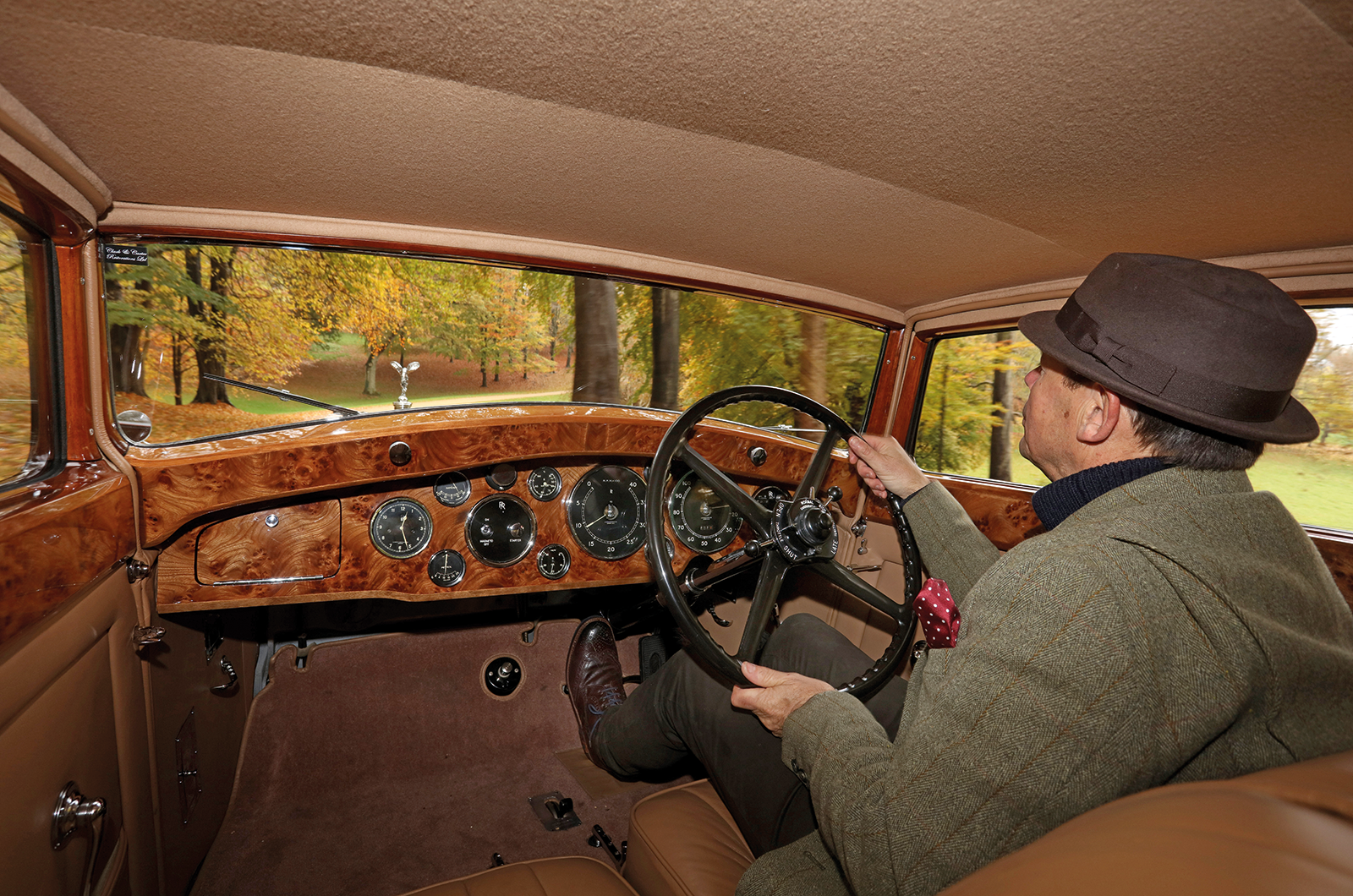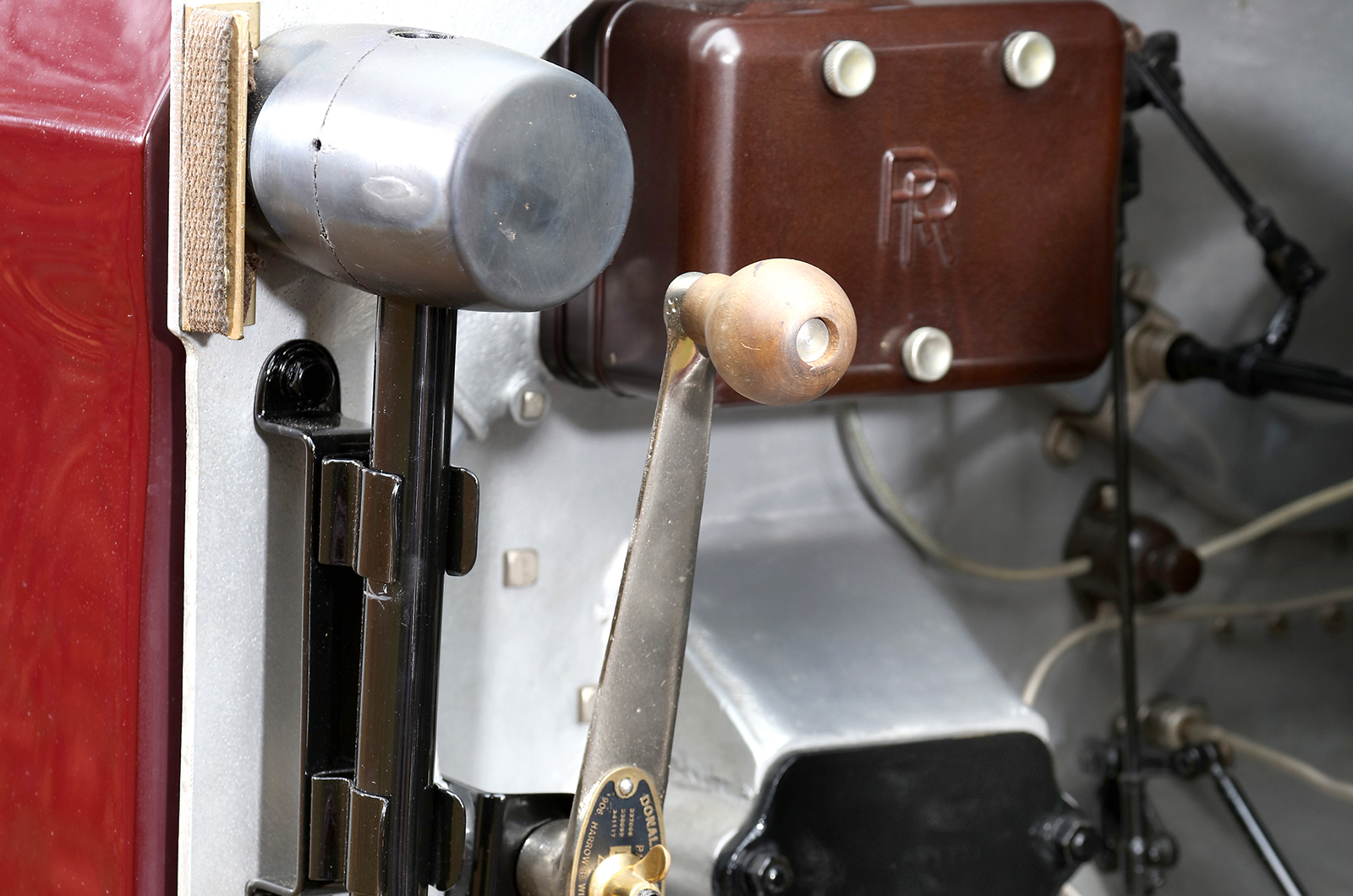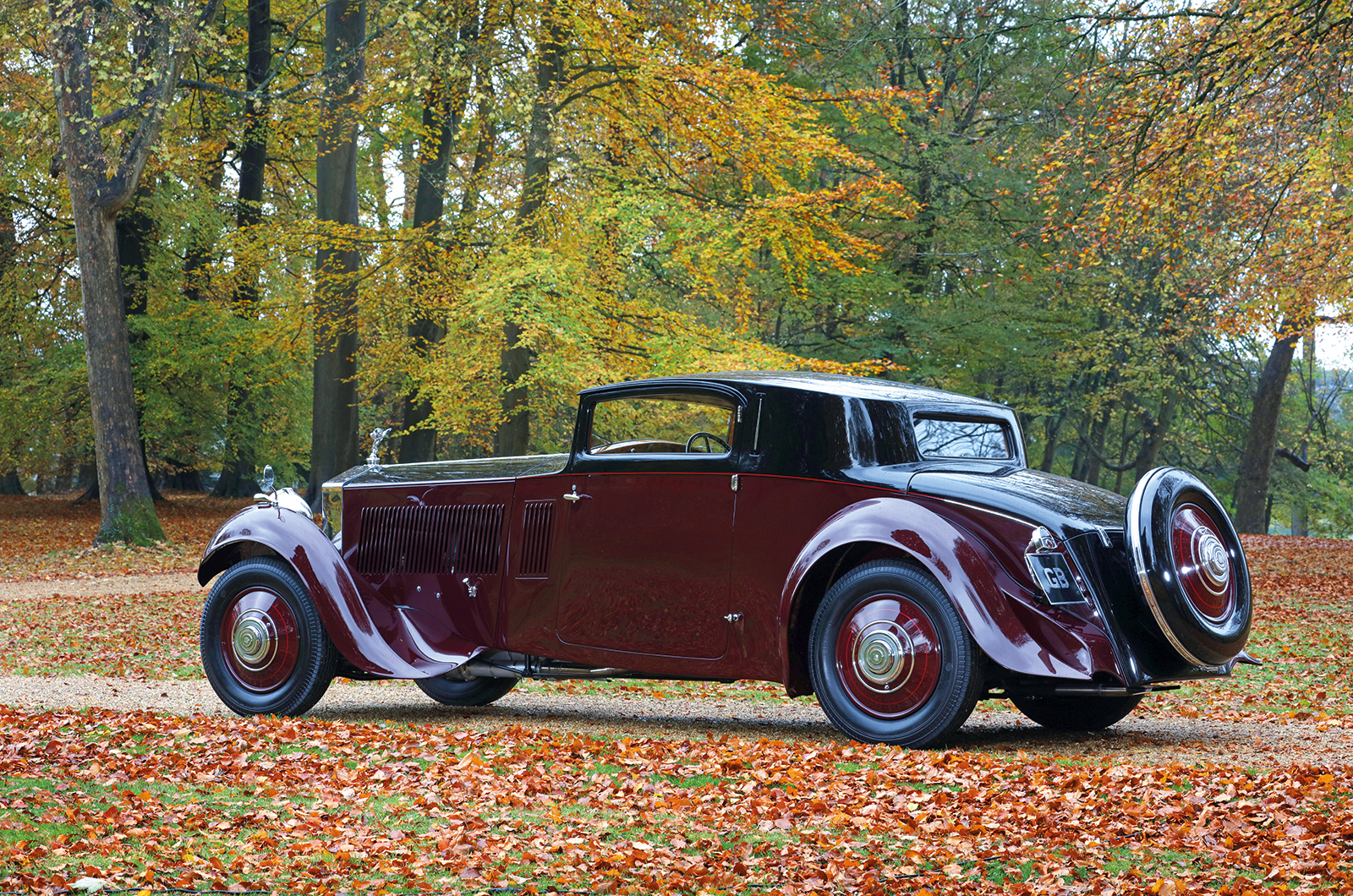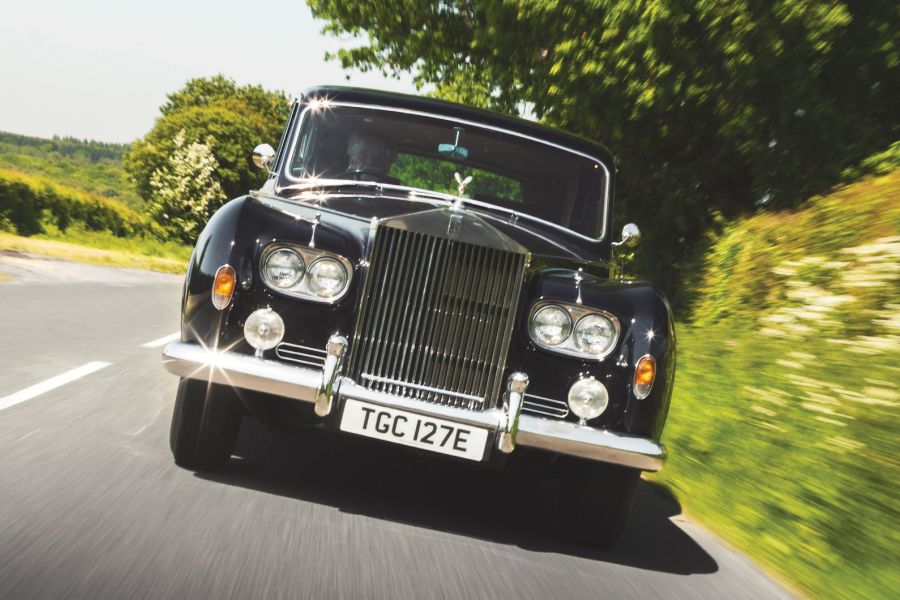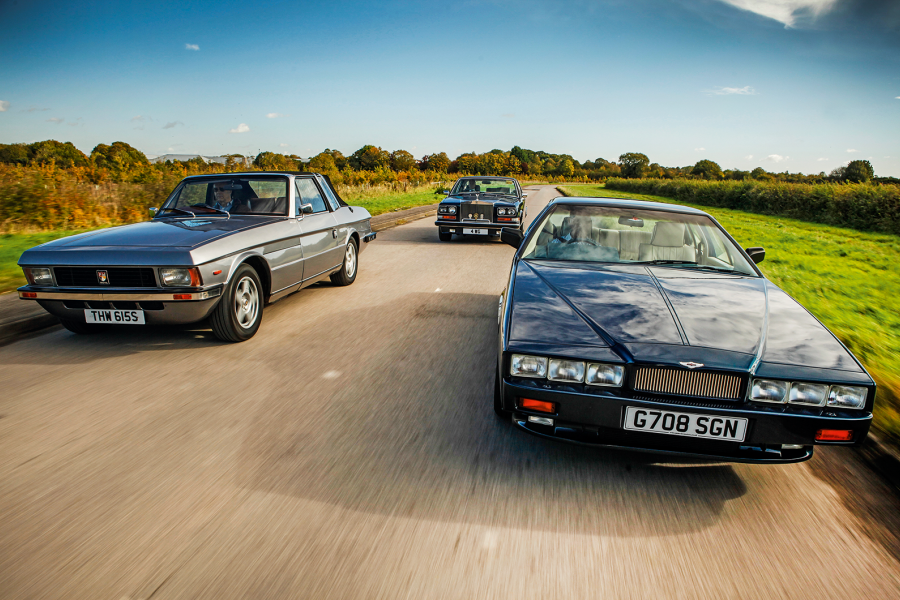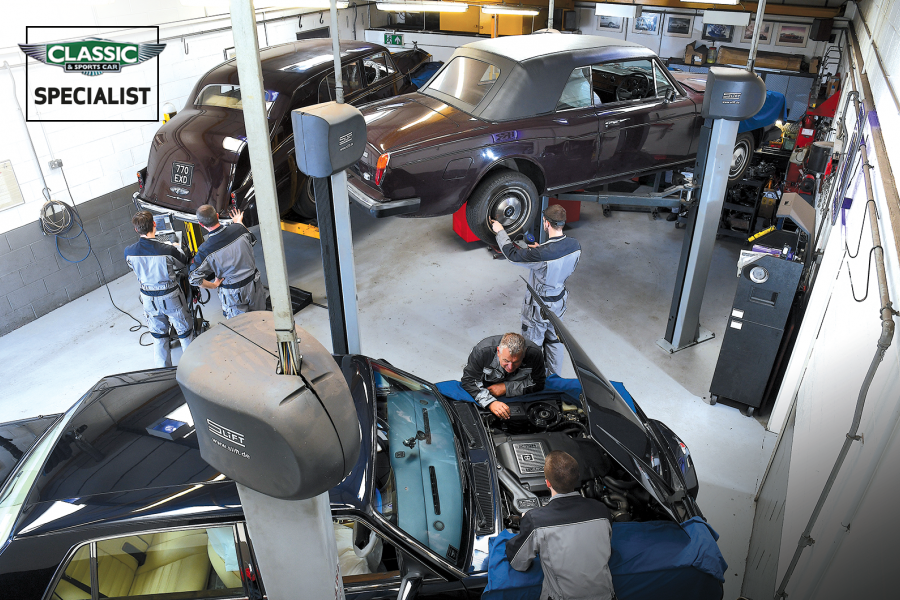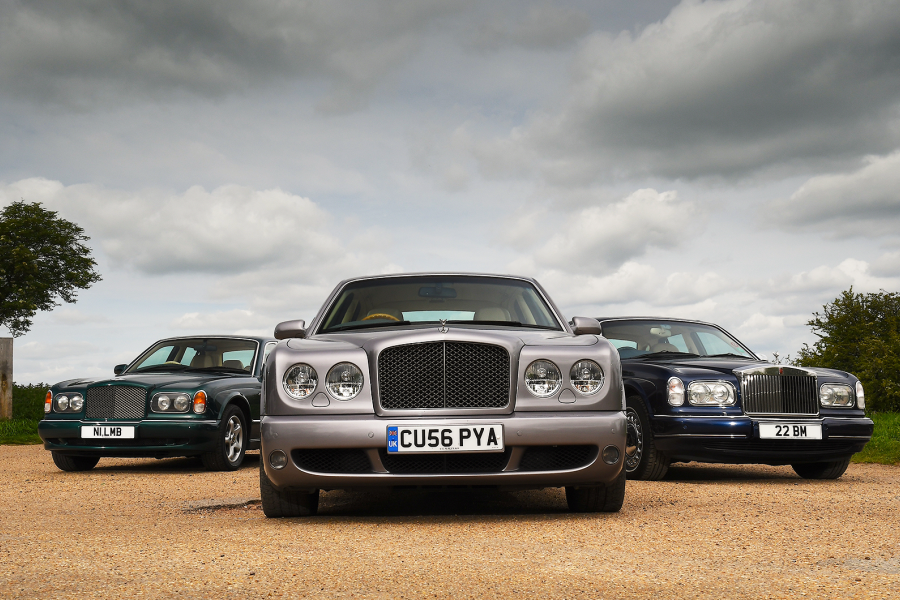The Phantom II changed hands once more in the States when acquired by Roger Willbanks, who commissioned top American photographer Michael Furman to shoot a superb set of the imposing machine, the studio lighting further emphasising its handsome lines.
When RM Auctions and Sotheby’s linked up for the first Art and the Automobile sale in New York in 2013, the Freestone and Webb fixed-head coupé was among the select group of iconic machines offered, together with a Talbot T150 ‘Teardrop’ and a Ferrari 250LM.
The great car, at $2.4million, made a world-record price for a Phantom II and, for the first time in 56 years, it headed back home to join the outstanding collection of Lord Bamford.
The JCB chairman has long had a passion for coachbuilt RollsRoyces, in particular Phantom II Continentals and Phantom IIIs.
Straight away, he had the paintwork returned to an authentic two-tone colour scheme by Clark & Carter Restorations, just as Sir John Leigh had ordered 42PY from Freestone and Webb 90 years before.
This splendid vehicle now keeps company with several other Phantom II Continentals, including the two Gurney Nutting-bodied examples, the Owen Drophead Sedanca Coupé 149RY, and the exquisite ex-George Gee Gurney Nutting two-door Boat Tail Speedster 125RY. Over the years, Bamford has owned three of Leigh’s Phantom II Continentals.
The rear three-quarter view shows off the rakish lines, with its low roof, swept wings and no running boards; Lord Bamford reinstated the original two-tone colour scheme
Open the huge rear-hinged door, and slide onto the deep, pleated cream leather seat after working your legs around the outer gear/handbrake levers, and the letterbox vista is instantly apparent.
Like in the famous Barnato Bentley 6½ Litre Gurney Nutting Coupé – a design that could well have influenced Leigh – the view down the massive expanse of bonnet is like a wide-screen movie.
The burr-walnut dashboard features a handsome array of black-faced dials, including a 100mph speedometer and rev counter marked to just 4000rpm.
The factory advised owners to keep to a 75mph maximum for the new German autobahns, with 3500rpm only to be used for short bursts of acceleration.
The broad four-spoke steering wheel with centre boss controls is the most dated aspect of the interior, harking back to the Edwardian Ghost.
Driving any properly maintained Phantom II is a marvellous treat. The creamy delivery from the 7.6-litre overhead-valve straight-six powers this 2-ton beauty with majestic ease and, once rolling, the worm-and-nut steering is precise and superbly weighted.
With such reserves of torque, the gearchange is barely needed but the action via a deep gate and lovely smooth movement is a joy to operate.
The mechanically servo-assisted drum brakes also inspire, pulling up the big car strongly in an emergency, while the ride, despite the Continental’s sportier spec – with flatter springs and fewer leaves at the rear – is still serene.
It’s a glorious event as the Continental purrs along wooded Cotswolds roads at 70mph in top. In the early 1930s, this exclusive experience had parallels with a private jet today, which really puts Sir John Leigh’s fleet of four Continentals into perspective. The cotton magnate certainly travelled in style.
Images: James Mann
READ MORE
How the other half lived: Bentley MkVI vs Armstrong Siddeley Sapphire 346
A missed opportunity? This is the only Jensen CV-8 convertible
Mercedes-Benz 450SLC 5.0: the world’s least likely rally car?
Mick Walsh
Mick Walsh is Classic & Sports Car’s International Editor
